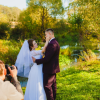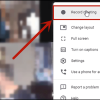Gone are the days when people use to take their handy cams out of their bags to simply record a few wedding moments and after some crappy recording their camcorder memory dies. This is 2021 and people are Shooting Wedding Videography in 8k with cinematic shots. Now, the best wedding videography is not just about recording anything anymore, it has become a creative art, an art that brings memories to life.
Making an amazing wedding video is nothing short of magic and whoever makes or creates it is a magician. The photographs save your memories, but the videos take you back to those very moments. However, filming such emotional, important, and unparallel life events can be one of the most difficult and demanding things you can do as a creator.
Learning how to record a wedding video or Shooting Wedding Videography isn’t just about reading books and taking classes. You also need to develop your expertise, develop instincts to capture moments, and deliver something different based on your understanding of the situation. Being the best is not all about who has a better camera, it is really about getting creative and adding touch excellence in Shooting Wedding Videography, and wow that makes the videos stand out and gives the blessed couple exactly what they are looking for.
If you are looking for ways to make your wedding videos more engaging, more cinematic, and looking for what you need to know and what are the best wedding video-making tips, you are reading a precise article. To find out how to create a sentimental wedding video, read on.
Table of Contents
Start With a Checklist
Remember that every wedding is different, so you may have more or less to film. Generally, more is more and you can always recompose the number of takes when you edit them together for the final cut. If you are planning to live-stream your wedding, ask your videographer to have a dedicated videographer/producer handle the virtual component.
You will need a range of wedding prep shots, venues, and arrivals. Such as:
- Photos of the couple preparing for the ceremony.
- Photos of the wedding and the groomsmen getting ready.
- The exterior of the ceremony site.
- The landscape around the place.
- Interior of the ceremony site.
- Guests arriving at the ceremony site.
- Decorations, including close-ups.
- Musicians’ performers.
- Groom waiting at the altar.
- Parents of the bride and groom.
- Flower girls.
- Changing rings.
- Introduction as a married couple
- Bridal party walking down the walkway.
Of course, there are many more moments to capture, but these are the most important.
The List of High-Tech Equipment
If you’re shooting solo or alone, you will need at least two cameras to get the multiple angles that wedding videographers often rely on their second shooters to capture. Try to switch between Sony A7 and Nikon depending on the settings. For example, the Sony A7 III or Canon Mach 2 5D has a large touchscreen for focusing during setup, while the Sony A7S II is unmatched when it comes to low light. Also, you can use a second camera as a backup if needed.
When it comes to light, it is a crucial part of any video production. A small lighting kit like the Impact Quality 300 2-light kit, the 2-light umbrella kit will have you covered in most situations. However, a wedding ceremony and reception are not typical sessions. Therefore, most of the lamps you use should be positioned with care. Bounce your lights off walls and ceilings when possible, and use soft boxesor diffusion when direct lighting is needed. These techniques will bring you a lot of light.
Better to have multiple audio source recordings. If the camera capturing quality audio, then is good, otherwise, prepare external recorders. Try to avoid putting the mic on a bride, opt for a lapel mic on the officiant or groom instead.
- You should also have a list of these:
- A high-end laptop.
- At least one ultra-fast TB flashcard.
- At least a couple of five hundred GB or more SD cards.
- One TB external hard drive.
- Eight to ten batteries for each camera.
- Audio recorder and microphone for audio recordings.
- Camera stabilization for the best shots.
Stabilization Is Necessary
Switching to the handheld won’t be enough. Whether you are using a gimble, tripod, monopod, sliding cam, slider, or shoulder platform, make sure you can quickly switch between your support gear. By attaching the same quick release plate to all of your gear, you can easily switch on the fly. Tripods work great during any wedding ceremony.
Get There Early
If you are filming a wedding solo you had better believe your time will be shortened, you might want to arrive at the venue thirty minutes or an hour early to freshen up and take some backdrop photos without the pressure of the important moments which happen after another. On the wedding day, arrive at least an hour before the ceremony. You should wait with the camera ready at least five minutes before the ceremony. Take some photos of the altar and the guests while you wait. Be sure to take thirty-second close-ups of the flowers and decorations. You can use them later in the edit to hide bad camera shake.
While Shooting Wedding Videography
If they have a wedding arch at the ceremony venue, sometimes you can put a small microphone on it and hide it under flowers. If they don’t have one, ask the groom and officiant for the mic, and you can sequence the bride’s vows from there. Shoot most of the time with your wide-angle lens. Wide shots are much easier to take with the stabilizer, and with 4K you can push if you need a closer shot. Shoot at 60-120 fps most of the time. Slow-motion video is all the rage for one-minute wedding stanzas on Instagram, and for me, it’s a lot easier to edit and create a more cinematic video with footage that can slow you down. For anything that involves talking or that you would like to show in real-time. If you over-train and stage everything, the result will look canned. You want a little bit of life and that calm feeling when it comes to your wedding video.
Capturing The B-Roll
Many Wedding Videographers who cannot afford a second video shooter tend to invest in a cheaper second camera and tripod. You can leave it in a wide shot while focusing in close-up, or you can zoom in on your subjects through the B-roll camera to make sure you capture all of their reactions. It is worth checking your B-roll camera regularly to make sure that it is still framed, that the batteries are not depleted, that there is enough storage space, and that you have managed to record. Always remember when shooting a video of a wedding, do not get overwhelmed, just stay alert, keep the camera steady, and capture the magic.
Hello, I am a professional writer, with more than 10 years of writing experience. I love to write on the science related subjects and share knowledge with my readers. I hope all my reader friends will enjoy my work.







